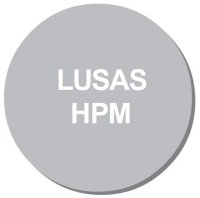LUSAS High Precision Moulding (HPM)
Consultancy Service
|
To accurately predict the distortion of laminated composite parts during manufacture
and provide reverse engineered surfaces to create "right first
time" tooling LUSAS offers a consultancy service
using its specialist LUSAS High Precision Moulding (HPM) software
product.
By using this service considerable savings can be made in
time to market, manufacturing time and costs are less, assembly
stresses are lowered, and the time-consuming fitting of any shims is eliminated.
|

|
Background
to Composites
Manufacture
During the cure of a composite part
residual stresses develop resulting in distortion of the component
from its moulded shape. This causes potential difficulties in its
use in product assembly. In aircraft airframe applications it is
estimated that a high percentage of the costs associated with
composite parts occur during the assembly process. This is mainly
due to the distortion of individual components and the time
associated with the rework and shimming processes required to
accommodate these distortions. As an example, an aircraft assembly
may require a significant amount of shimming to correct errors due
to component distortion. Historically trial and error tooling
changes have been carried out in order to try to achieve the desired
post-cure part shape but a more accurate and less ‘hit and miss’
method needed to be found. As a result, LUSAS High Precision
Moulding software was developed.
Modelling
Data defining the geometry of the
composite part and tool is first imported into LUSAS in either IGES or
STEP format. Once in, the HPM user interface (which has been designed
in collaboration with composite manufacturers), allows tooling
engineers to define all aspects of composite layup and cure simulation
modelling. High-performance linear and nonlinear elements are assigned
to the model along with boundary conditions, material properties and
layup orientation. Temperature profiles and analysis controls must
also be specified.
Several materials from commercial
suppliers are available. In the HPM material database the properties for
resins and fibres are stored separately to allow individual selection
according to use. Laminate properties are calculated from the resin
and fibre data properties using sophisticated micro-mechanics
equations. Weave construction details and fibre-volume fraction are
also defined via the HPM user interface. LUSAS HPM interfaces with FiberSim,
which gives seamless transfer of material information in XML format.
Linking of LUSAS HPM with CATIA Composites Design is possible via Simulayt’s
Composites
Link product. Visualisation of fibre direction and skew
angles allows for detailed checking of layup orientation. Nonlinear contact
algorithms can model slip and lift off between Part and Tool during
cure simulation.
|

|

|
|
Visualisation
of layups |
Contact
modelling of Part and Tool |
Analysis
A coupled thermal-mechanical analysis
is carried out in LUSAS to model thermal curing and calculation of
residual stress. The temperature and degree of cure throughout the
manufacturing process caused by the internal heat generation during
cure is calculated using a transient thermal analysis. This data is
then passed to a transient nonlinear stress analysis to compute the
deformations due to temperature change and chemical shrinkage. Results
are viewed in LUSAS HPM where displacements from the stress analysis
can be factored to provide updated tool geometry. The revised tooling
geometry calculated by the LUSAS HPM software can be exported in IGES
format for use directly in the CNC tool cutting environment and will,
in turn, produce a part that will cure into the correct shape for
intended assembly purposes.
Benefits in using
LUSAS HPM
By using LUSAS HPM software in the
design process competent design engineers can now extract master model
and tooling surfaces "right first time" ensuring that
correctly sized post-cure components are obtained without iterative
guesswork. As a result the product development cycle is significantly
improved. With the use of accurately calculated master and tooling
surfaces it is anticipated that the cost and time required to assemble
composite components could be greatly reduced. The ability to build
composite components accurately will also enable larger components to
be manufactured, reducing the part count and provide further savings
in manufacturing costs.
The revised tooling geometry
calculated by the LUSAS High Precision Moulding software can be
exported in IGES format for use directly in the CNC tool cutting
environment and will, in turn, produce a part that will cure into the
correct shape for intended assembly purposes.
Software Validation Modelling
During the course of the development of
LUSAS HPM numerous models were created to validate results obtained
against manufactured items. LUSAS HPM results for models of C-shaped
laminates, exterior panels, cleated curved spars and curved spars with
ply-drop off all produced very good correlation with experimental and
manufactured test components.

C-Section model
showing good correlation of LUSAS and test results

C-Spar model and
tooling above spring-in results for outer curve of spar showing good
correlation between LUSAS and manufactured part.
Validation Components
The following images show just some of the
validation components used during the development of LUSAS HPM
software:
 |
 |
 |
| Fan
cowl doors |
Exerior
panel |
Spar |
|